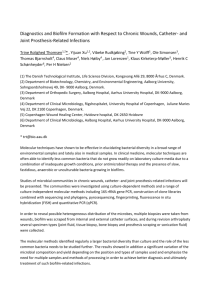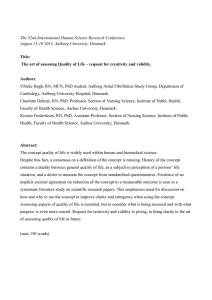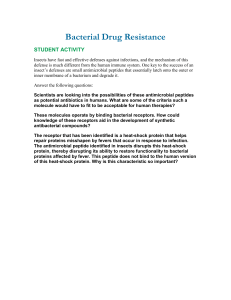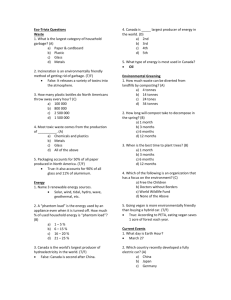v120213statistics 3
advertisement
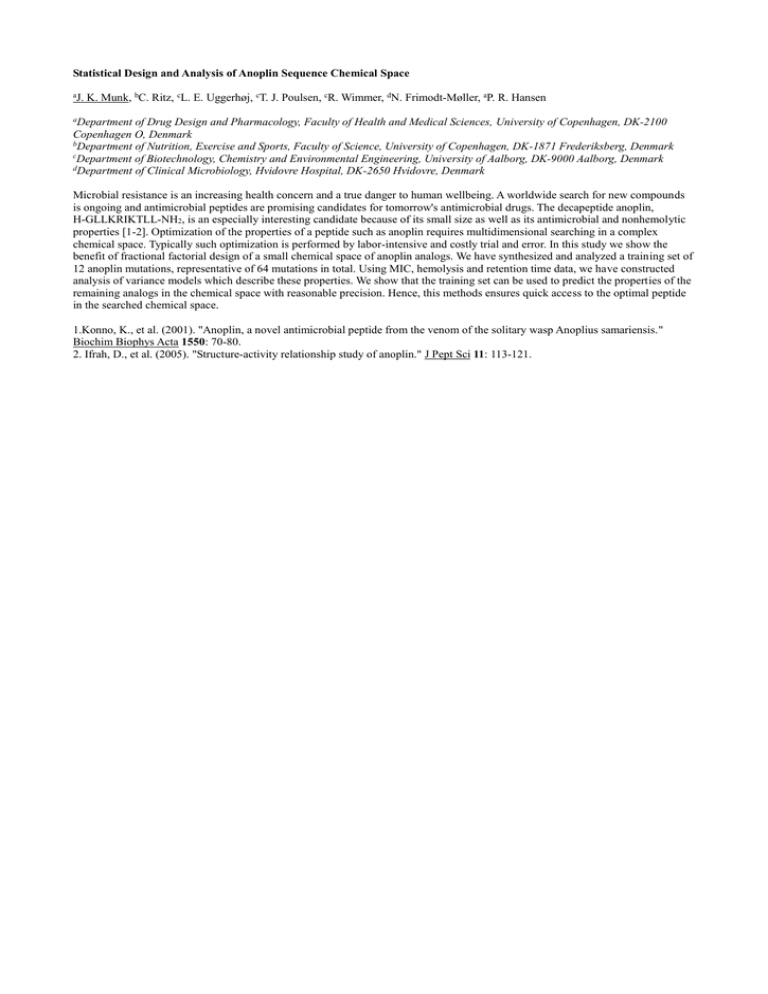
Statistical Design and Analysis of Anoplin Sequence Chemical Space aJ. K. Munk, bC. Ritz, cL. E. Uggerhøj, cT. J. Poulsen, cR. Wimmer, dN. Frimodt-Møller, aP. R. Hansen aDepartment of Drug Design and Pharmacology, Faculty of Health and Medical Sciences, University of Copenhagen, DK-2100 Copenhagen O, Denmark bDepartment of Nutrition, Exercise and Sports, Faculty of Science, University of Copenhagen, DK-1871 Frederiksberg, Denmark cDepartment of Biotechnology, Chemistry and Environmental Engineering, University of Aalborg, DK-9000 Aalborg, Denmark dDepartment of Clinical Microbiology, Hvidovre Hospital, DK-2650 Hvidovre, Denmark Microbial resistance is an increasing health concern and a true danger to human wellbeing. A worldwide search for new compounds is ongoing and antimicrobial peptides are promising candidates for tomorrow's antimicrobial drugs. The decapeptide anoplin, H-GLLKRIKTLL-NH2, is an especially interesting candidate because of its small size as well as its antimicrobial and nonhemolytic properties [1-2]. Optimization of the properties of a peptide such as anoplin requires multidimensional searching in a complex chemical space. Typically such optimization is performed by labor-intensive and costly trial and error. In this study we show the benefit of fractional factorial design of a small chemical space of anoplin analogs. We have synthesized and analyzed a training set of 12 anoplin mutations, representative of 64 mutations in total. Using MIC, hemolysis and retention time data, we have constructed analysis of variance models which describe these properties. We show that the training set can be used to predict the properties of the remaining analogs in the chemical space with reasonable precision. Hence, this methods ensures quick access to the optimal peptide in the searched chemical space. 1.Konno, K., et al. (2001). "Anoplin, a novel antimicrobial peptide from the venom of the solitary wasp Anoplius samariensis." Biochim Biophys Acta 1550: 70-80. 2. Ifrah, D., et al. (2005). "Structure-activity relationship study of anoplin." J Pept Sci 11: 113-121.
